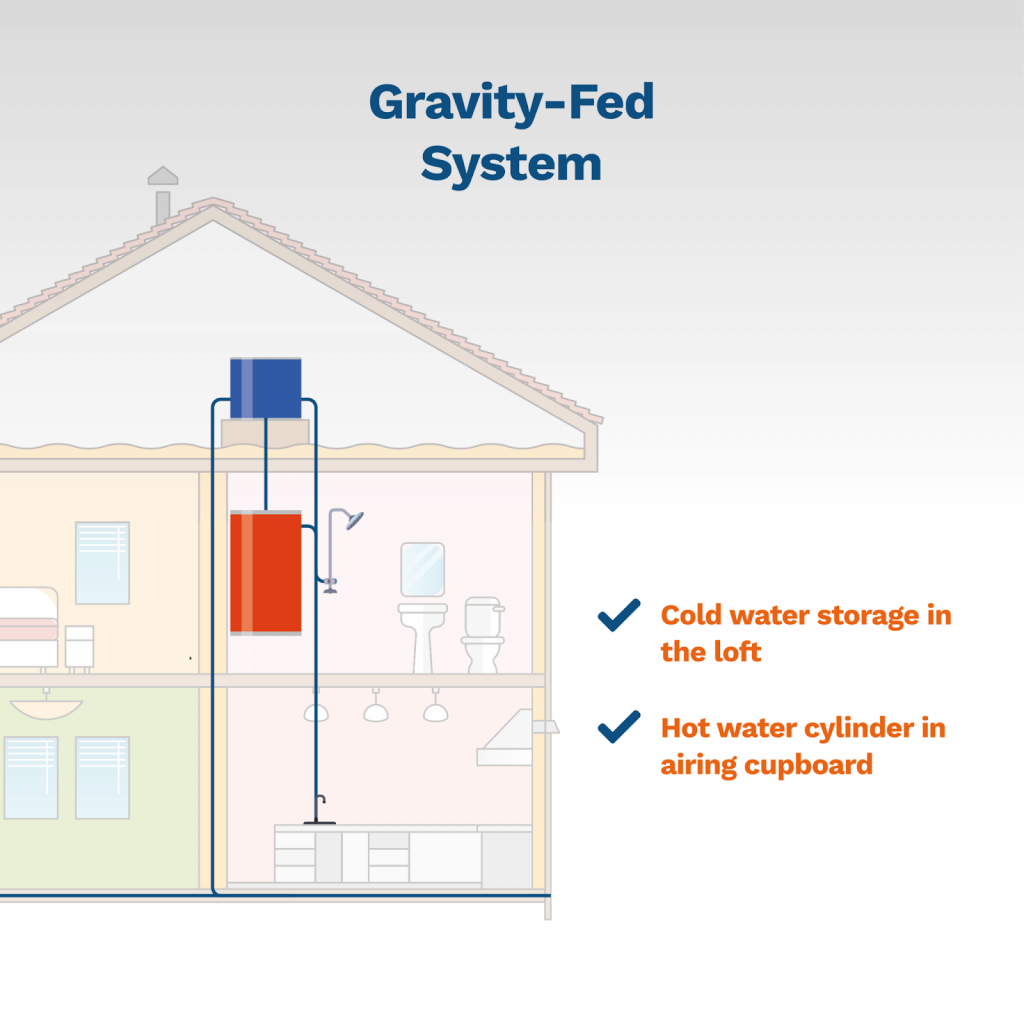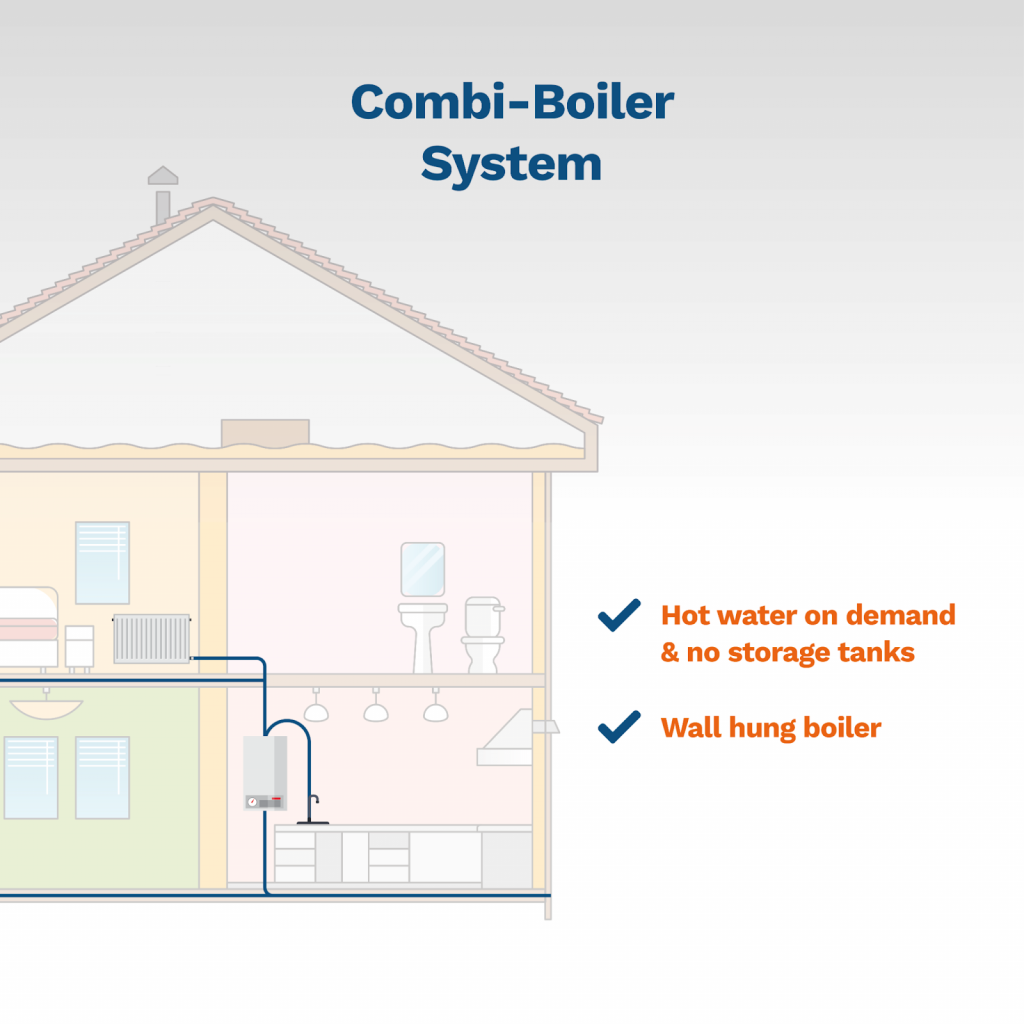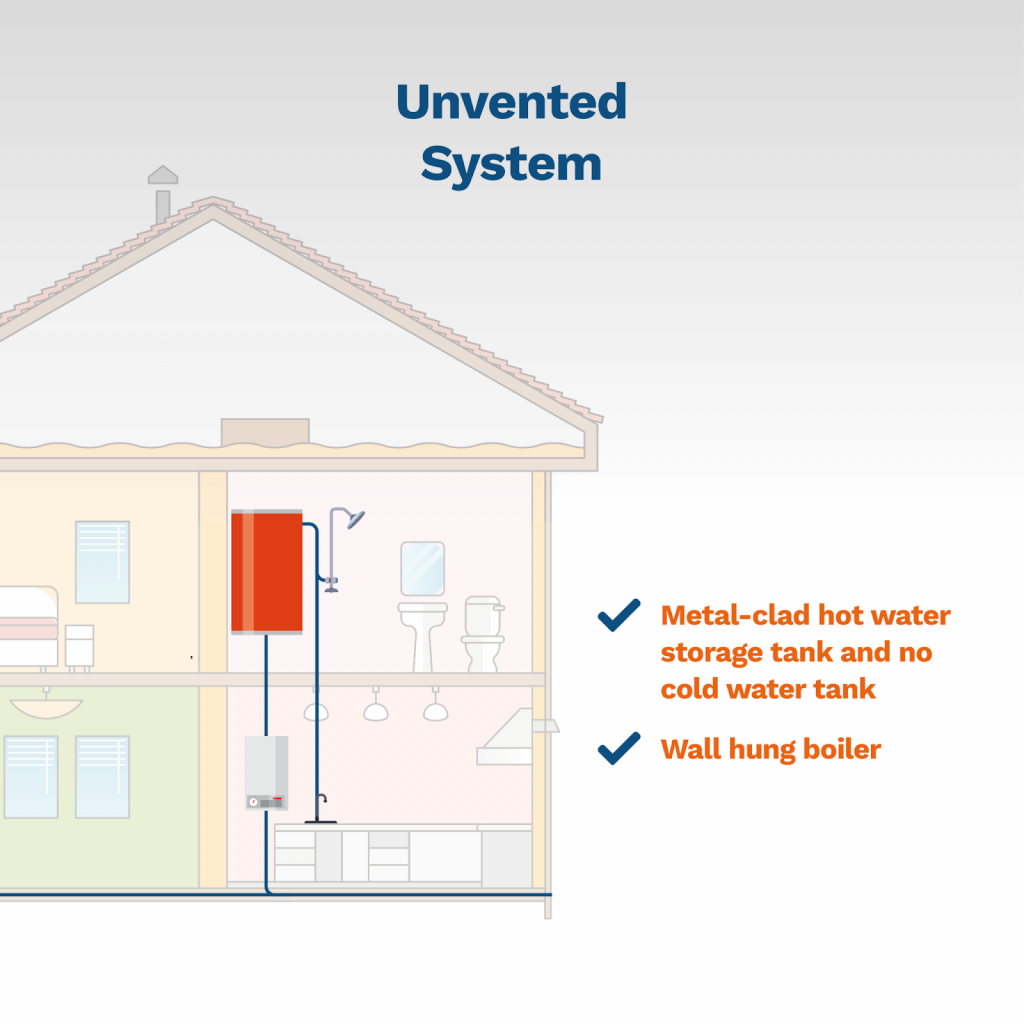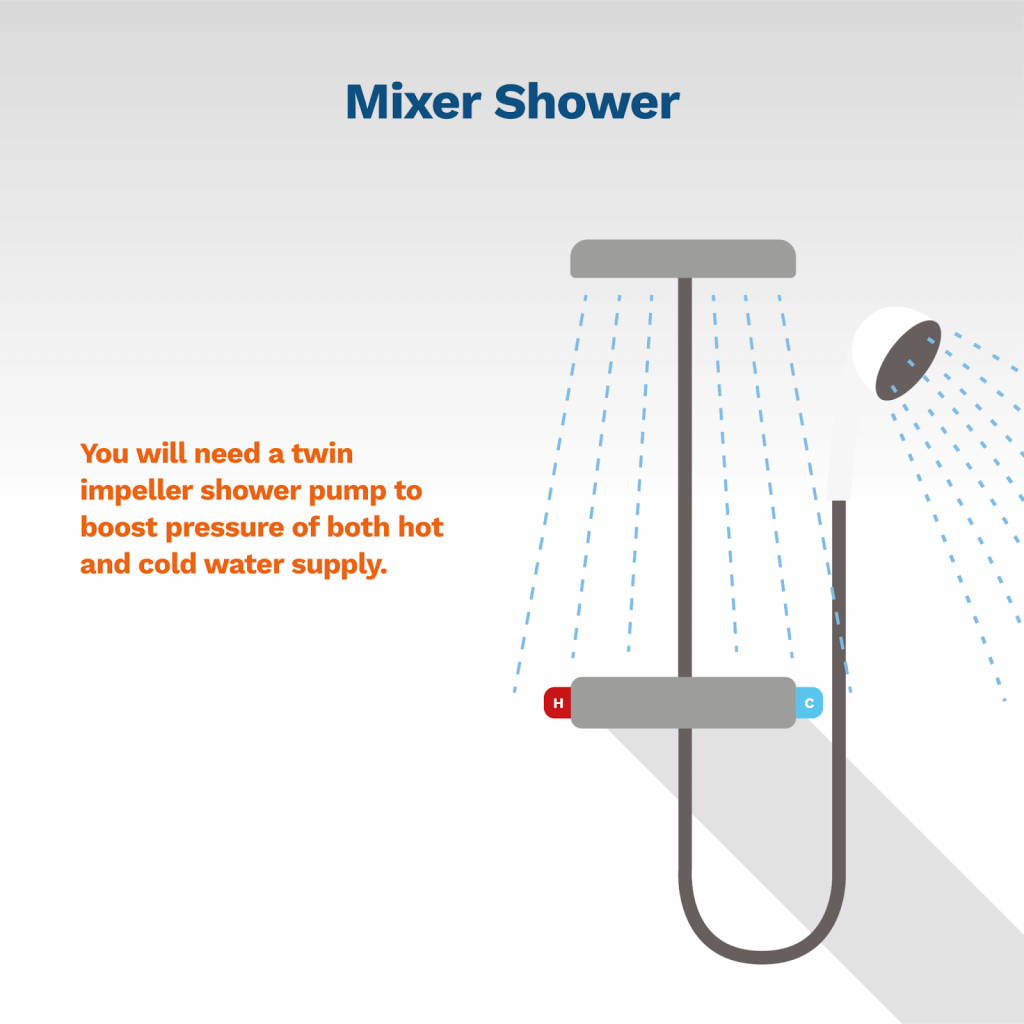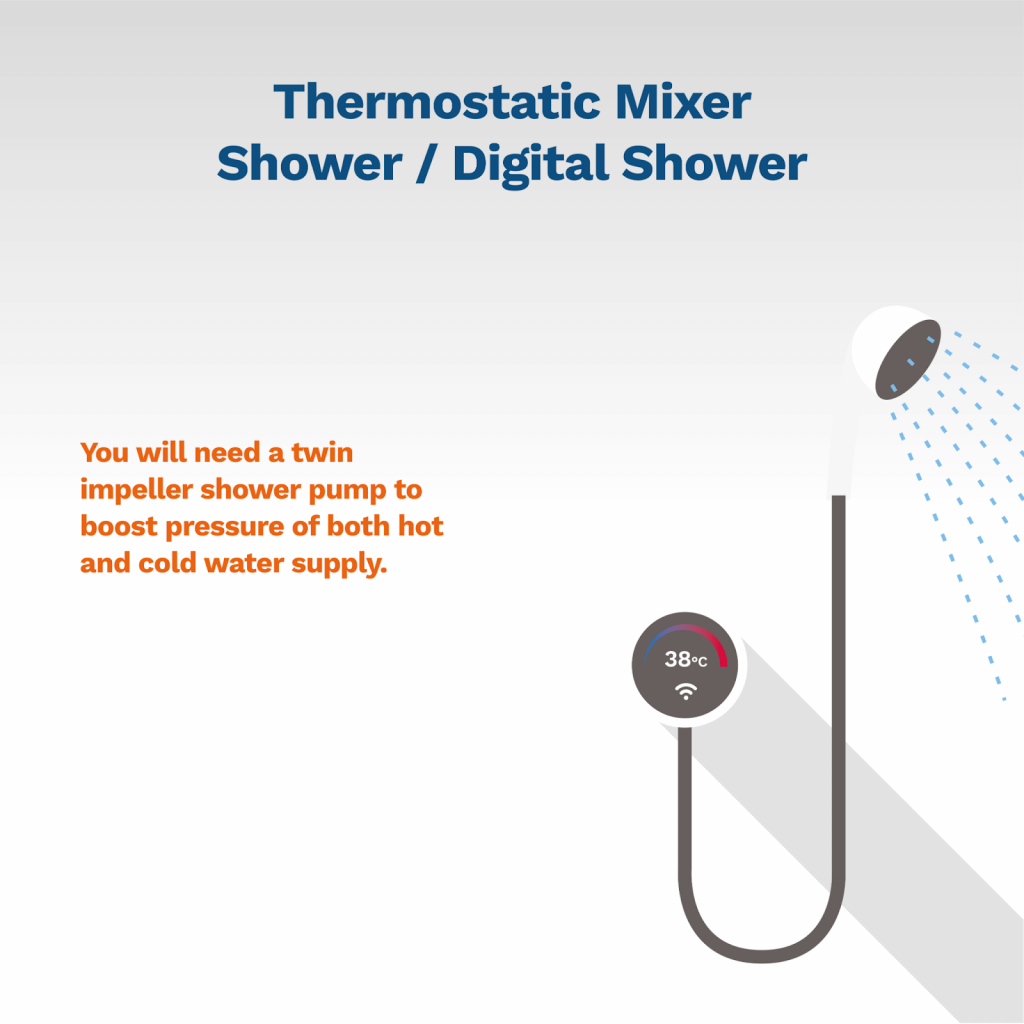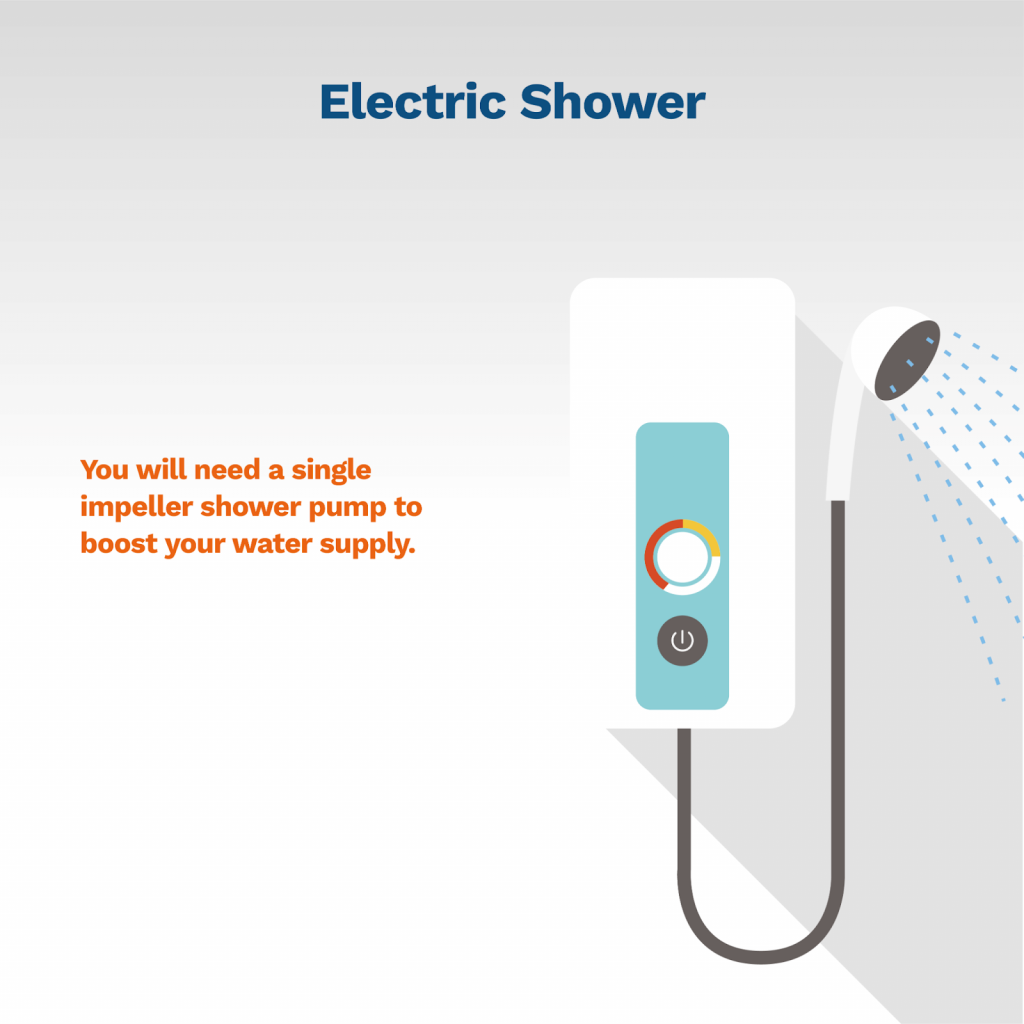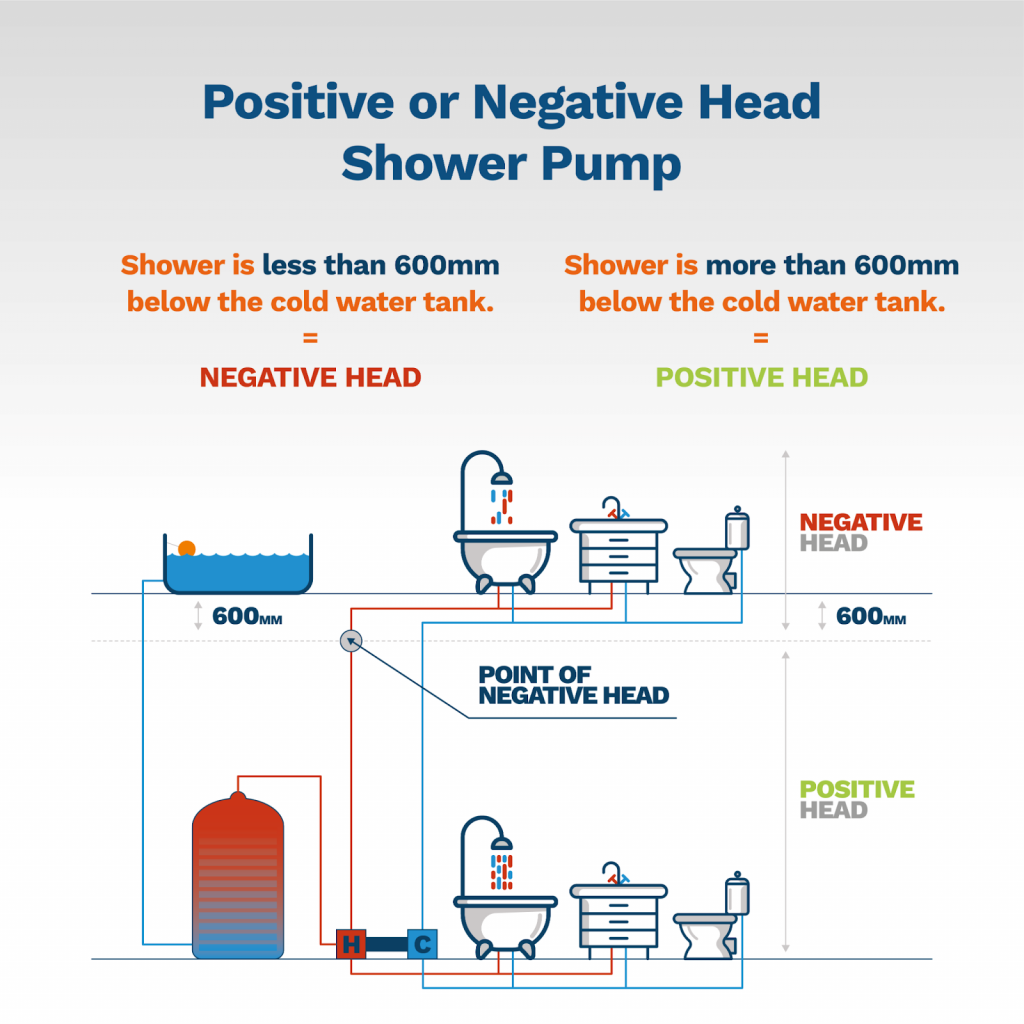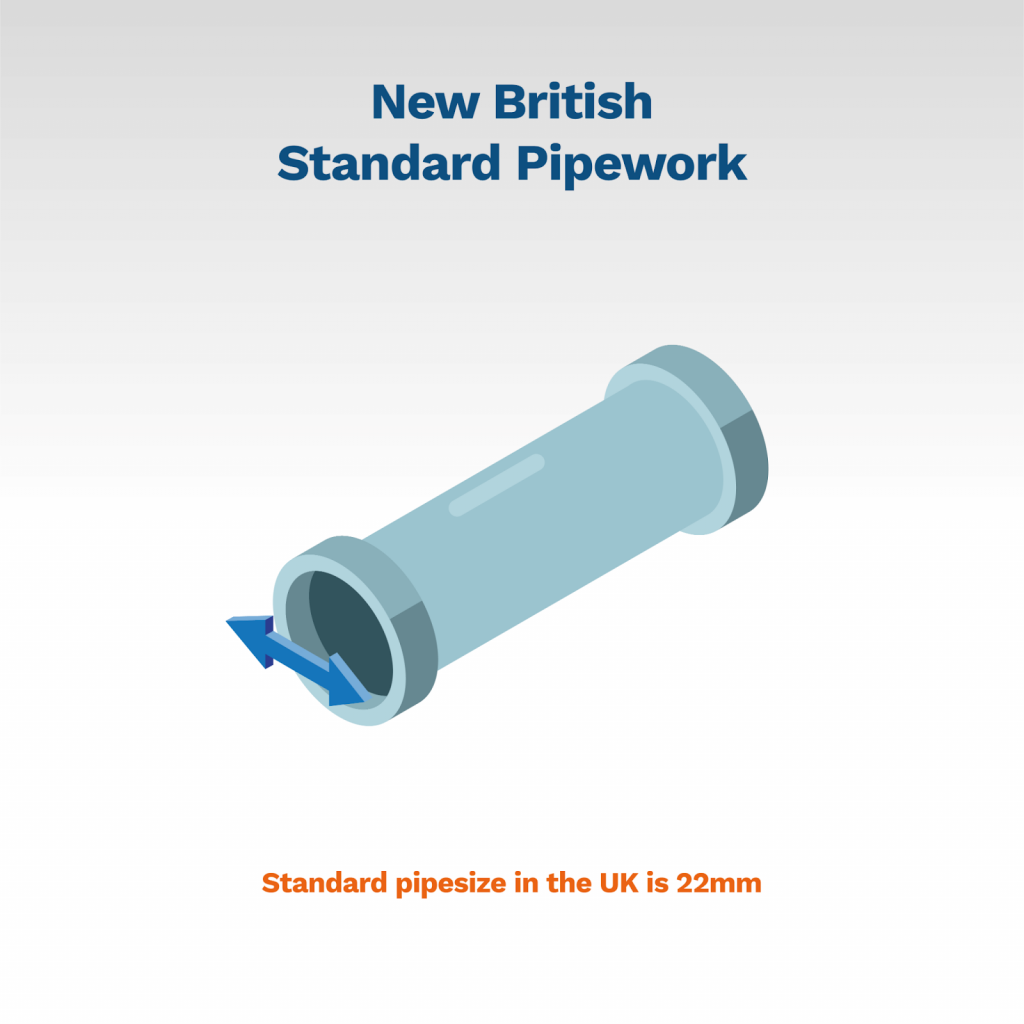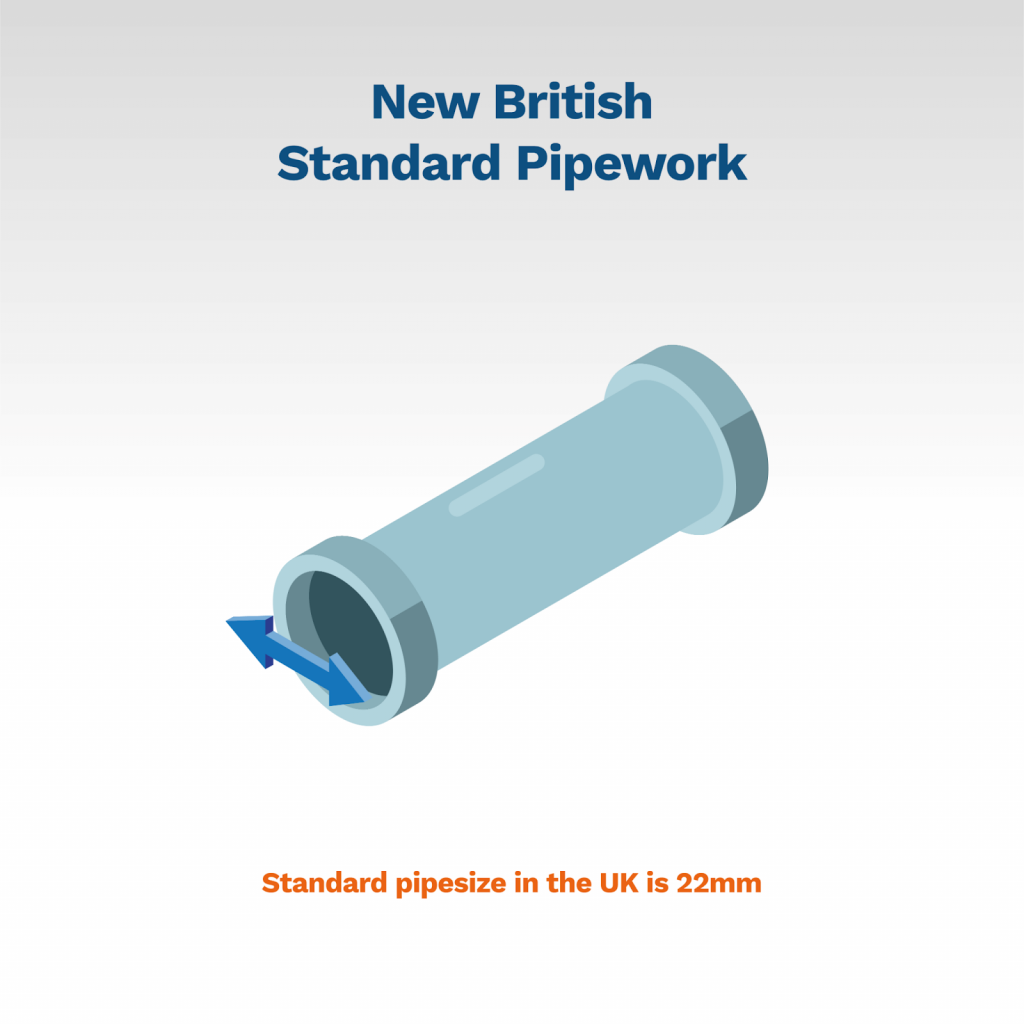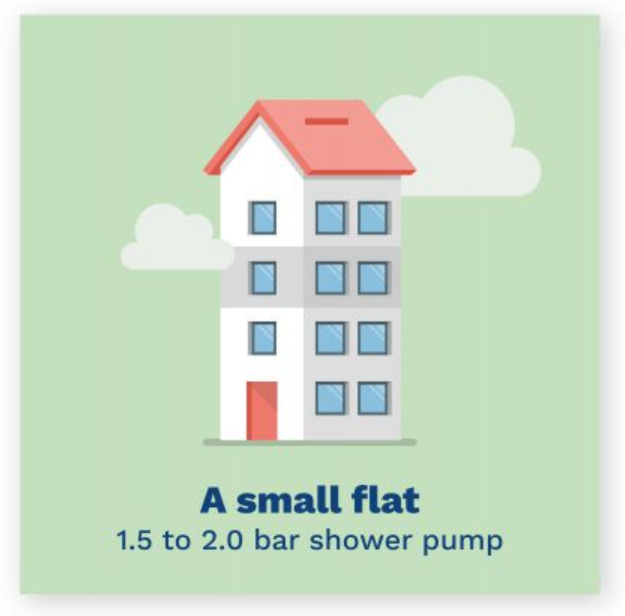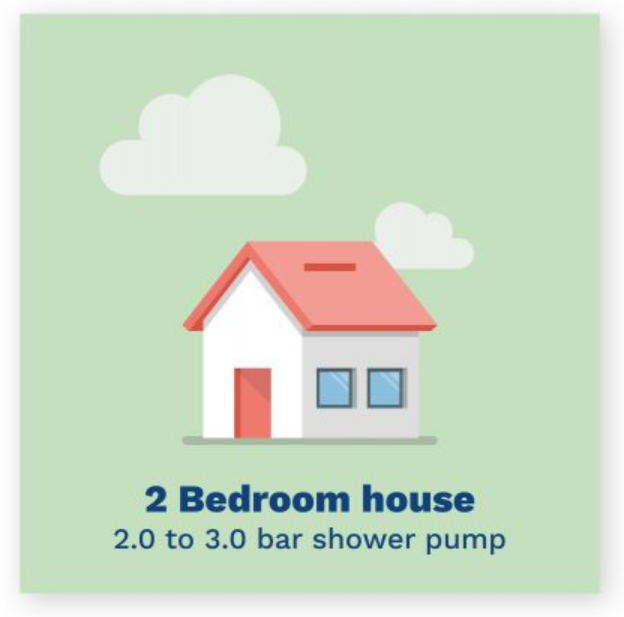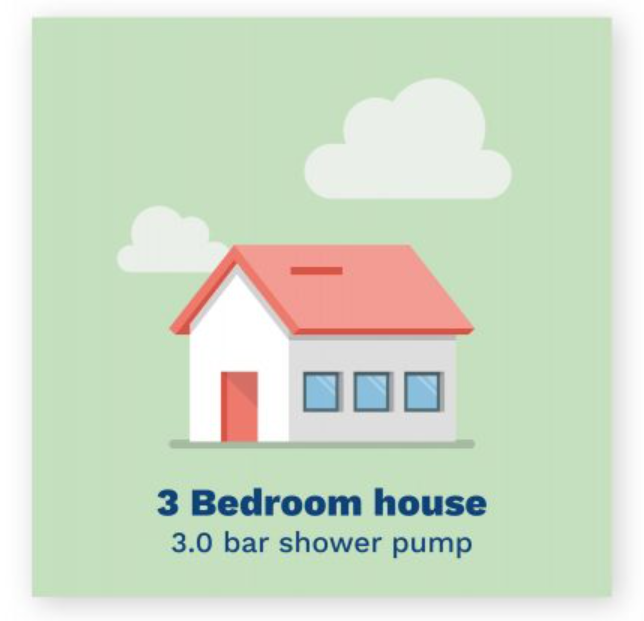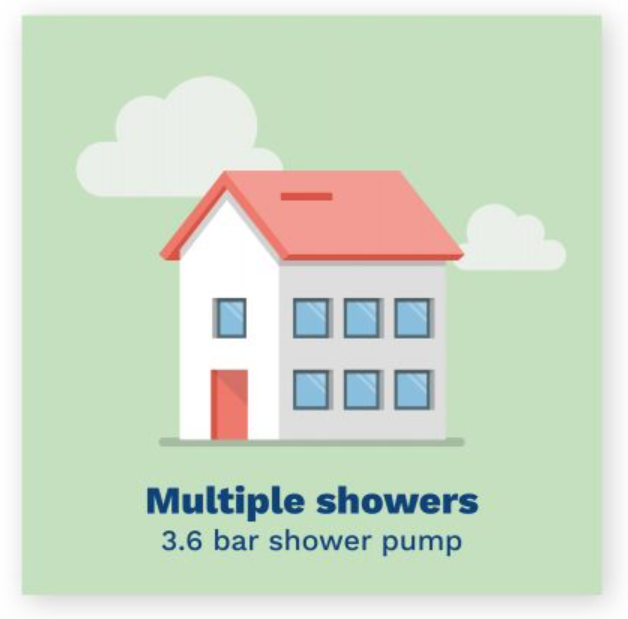Which Shower Pump Type Do I Need? (Expert Guide)
If you're struggling with low water pressure in your shower, a shower pump can be a great solution. But with so many different types of shower pumps on the market, it can be hard to know which one is right for you.
In this guide, we'll walk you through the steps of choosing the right shower pump for your home. We'll also cover the best shower pumps for different types of heating systems.
- What type of shower pump do you need for your boiler?
- What shower type do you have installed?
- Do you need a positive or negative head (universal) shower pump?
- Do you need a single or twin impeller shower pump?
- What size shower pump do you need?
What type of shower pump do you need for your boiler?
Understanding the compatibility between shower pumps and boiler systems is crucial to ensure optimal performance and prevent any potential damage. So, one of the first things you need to check is what kind of boiler you have in your home.
There are three different types of boiler systems; a conventional gravity fed boiler system, a combi boiler system and an unvented system.
Type 1: Conventional Gravity Fed Boiler System
A gravity fed system will consist of a large cold water storage tank in the roof or loft and a hot water cylinder in an airing cupboard.
If you have a conventional gravity fed system, you will be able to fit a shower pump.
Type 2: Combi Boiler System
A combi boiler is usually located in the garage or downstairs airing cupboard. Combi boilers take water directly from the mains supply to deliver water around your home.
If you have a combi-boiler, you will not be able to fit a shower pump. Combi-boilers are sealed, and a shower pump would cause a change in pressure that could potentially cause the boiler to implode.
If you are suffering pressure problems with a combi-boiler, you may need to replace your combi-boiler system or contact your boiler provider.
Type 3: Unvented Boiler System
In an unvented system, there is no cold water tank. Instead, you will have a separate hot water cylinder to store hot water at mains pressure. An unvented system can be located in pretty much any area of your home.
If you have an unvented system, you will not be able to fit a shower pump. Unvented systems use the standing water pressure in the mains to drive the water. If you take the water out of a sealed vessel quicker than the water can get back in, you will create a partial vacuum, which can cause a catastrophic implosion.
What shower type do you have installed?
If you have a gravity fed boiler system and you’re able to use a shower pump, the next thing you will need to check is the type of shower you have installed. In the UK there are three main shower types, including the manual mixer shower, the thermostatic mixer shower and the electric shower.
Manual Mixer Shower
The manual mixer shower does exactly what it says on the tin. You manually adjust the levels of hot and cold water to your required pressure and temperature. In most cases, you will need a twin impeller system to boost pressure of both hot and cold water supply.
The most common model chosen by plumbers for the Manual Mixer Shower is the Salamander EVE
Thermostatic Mixer Shower
Similar to a manual mixer shower, a thermostatic mixer shower is fed by both a hot and cold water supply. The thermostatic valve monitors the water and keeps the water at your desired temperature. In most cases, you will need a twin impeller system to boost pressure of both hot and cold water supply.
The most common model chosen by plumbers for the Manual Mixer Shower is the Salamander EVE
Electric Shower
Electric showers are a tad different to mixer showers as they only take water from the cold supply. With a heating unit built within the electric shower, they can heat the cold water to your desired temperature. As they are completely disconnected from the hot water supply, you will likely need a single impeller pump.
The common model chosen by plumbers is the Stuart Turner Universal Shower Mate - model 46534.
If you are purchasing a shower pump for an electric or power shower, we advise that you contact your shower provider or manufacturer for further information. Each shower is built to a different specification and may need a universal pump even if they follow each of the rules in this article.
Do you need a positive or negative head (universal) shower pump?
So, do you need a positive or negative shower pump? Well, you will need a positive head shower pump if the bathroom and showers are on floors below the water tank - that is, your cold water tank is in the attic or if the cold water tank is above the shower head if you live in a single-storey flat or bungalow.
A positive head pump needs a flow rate of at least 0.6 litres a minute and relies on gravity to start the impellers to pump hot and cold water.
Negative head pumps work by pressuring water from the tank to the shower and is the best choice for when the shower head is at the same level or higher than the water tank. This can be used in loft conversions, for example.
Do you need a single or twin impeller shower pump?
After you’ve decided on a positive or negative head pump, you will need to decide between a single or twin impeller system.
A single impeller shower pump is designed to pump only one type of water. This is usually only used in a water system where one of either the hot or cold water is suffering from low water pressure.
A twin impeller shower pump is designed to increase the pressure of both hot and cold water supplies. This is to ensure that both supplies are boosted to the same level. Twin impeller pumps are more common than single impeller pumps and generally lead to a higher quality shower.
graphic showing the difference between a single and twin impeller shower pump
What pipe size do you have installed?
You will also need to take into account the size of the pipes that you plan to attach to your pump.
Standard pipesize in the UK is 22mm, but it’s possible for older houses to have a 15mm pipesize.
If you have an older plumbing system installed, double check your pipesizes as only a small selection of pumps cater for 15mm pipes. A 15mm pipe should not be connected to a pump designed for 22mm pipes.
If you are reading this article in the Republic of Ireland, things can get a little more complicated as your standard pipesize is 21mm, but you can also have the 15mm and 22mm options installed in your home.
What size shower pump do you need?
The size of pump you need will be determined by the pressure requirements of your home.
Think:
- How much pressure is needed to drive water to the taps and showers?
- What is the diameter of the showerhead?
- How many water units will be in use at one time?
- Do I have more than one shower?
- How big is my home?
Think carefully about the questions above before purchasing a shower pump. It may seem like a good idea to purchase a cheaper, low-pressure shower pump, but if you have a large family then it may fail to increase the water pressure in your shower.
Saying that we have a few general rules that should help you make a purchase decision.
A small flat
If you’re living in a small flat, apartment or house as a bachelor/bachelorette or with one partner, then you will need to purchase a pump with 1.5 to 2.0 bars worth of pressure.
Small family (2 Bedroom House)
For a young family in a small, 2 bedroom house, we suggest purchasing something with around 2.0 to 3.0 bars of pressure.
A family of four (3 Bedroom House)
If you have a family of four people plus, then we suggest purchasing a pump with about 3.0 bars of pressure.
Multiple showers
If you have multiple showers and taps in use at one time, then we suggest purchasing a pump with over 3.0 bars of pressure. Something like 3.6 bar should provide enough power.
Free Help and Advice
If you’re struggling for advice, ring our dedicated pump experts for free advice on: 0800 112 3134 or 0333 577 3134.
We’re open Monday to Friday 07:00 - 17:30 and Saturday 08:30 - 12:30.


